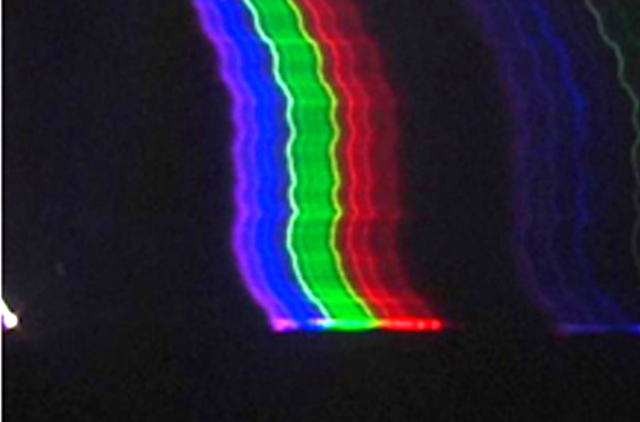
Ball lightning is an odd phenomenon. The few, fortunate people who have seen an incident describe the lightning as a roughly spherical glowing object that travels horizontally for a few seconds before vanishing. However, while several experiments have reproduced something resembling the phenomenon, the physical mechanism behind ball lightning is somewhat mysterious.
Now, a team of researchers serendipitously observed ball lightning at a time when they had the right equipment to study it. Jianyong Cen, Ping Yuan, and Simin Xue were in the field measuring the properties of ordinary lightning when they happened to catch ball lightning with both their high-speed cameras and their spectrographs. They found the chemical composition of the event matched that of soil. That strongly supports the hypothesis (proposed nearly fifteen years ago) that ball lightning is basically a dirt clod dislodged and heated to incandescence by a cloud-to-ground lightning strike.
Ordinary lightning occurs due to the ionization and dissociation of molecules in the air (a process with the awesome name "dielectric breakdown"), which occurs during a static electric discharge between clouds and the ground. Ball lightning is much rarer, to the point where some have even postulated it's actually a hallucination rather than a real weather phenomenon. As the name suggests, it appears as a spherical or spheroidal ball of light, between one centimeter and one meter in size, and variously colored as purple, green, white, or orange.
Just like normal lightning, ball lightning seems to occur primarily during thunderstorms. These events persist a few seconds, and the spheres travel horizontally close to ground level.
That information primarily comes from eyewitness accounts; ball lightning is rare enough that no scientists have ever observed it in the field while they had equipment to measure its properties. At least not until the summer of 2012, when the authors of the new paper were out on the Qinghai Plateau in China during a thunderstorm, taking spectral readings of ordinary cloud-to-ground (CG) lightning.
Just a few minutes before midnight, the researchers' digital video cameras picked up a ball lightning event, evidently originating from the location of a lightning strike. By estimating the distance to the strike (including the method many of us learned as children: counting the time between the flash of light and the sound of thunder), they determined the sphere was as much as 8 meters in diameter at its greatest size. They also estimated its speed to be about 8.6 meters per second (19 miles per hour). The whole event lasted roughly 1.12 seconds.
At its origin, the ball was a bright white-violet in color, but then it faded to orange and then red before vanishing. Analyzing the spectrum, the researchers identified silicon, iron, and calcium—three of the major chemical components in soil. (Aluminum is another common element in soil, but the authors pointed out that their cameras weren't able to spot the appropriate wavelengths to identify it.) Unfortunately, their equipment was insufficiently sophisticated to measure the ball lightning's temperature, but based on the incandescent properties, it was likely between 15,000 and 30,000° C.
The chemical signature of soil particles in the ball lightning lends strong support to an idea proposed by J. Abrahamson and J. Dinniss in 2000. They noted that silicon compounds, when heated to extreme temperatures, ejected fireballs not unlike ball lightning. K. D. Stephan and N. Massey reported that they could reproduce at least some of the reported properties of ball lightning by producing molten silicon spheres.
Given the physical picture from the Qinghai observation and the experiments, the hypothesis seems plausible. A cloud-to-ground lightning strike heats a spot on the ground to high temperature, ejecting a bunch of hot particles from the soil, which glow in the characteristic way. These spheres cool and dissipate over a period of a few seconds, all while moving quickly across the ground. While this picture may not be true for all ball lightning, it's the first plausible and coherent explanation for a weird, rare phenomenon.
Physical Review Letters, 2013. DOI: 10.1103/PhysRevLett.112.035001 (About DOIs).
reader comments
46